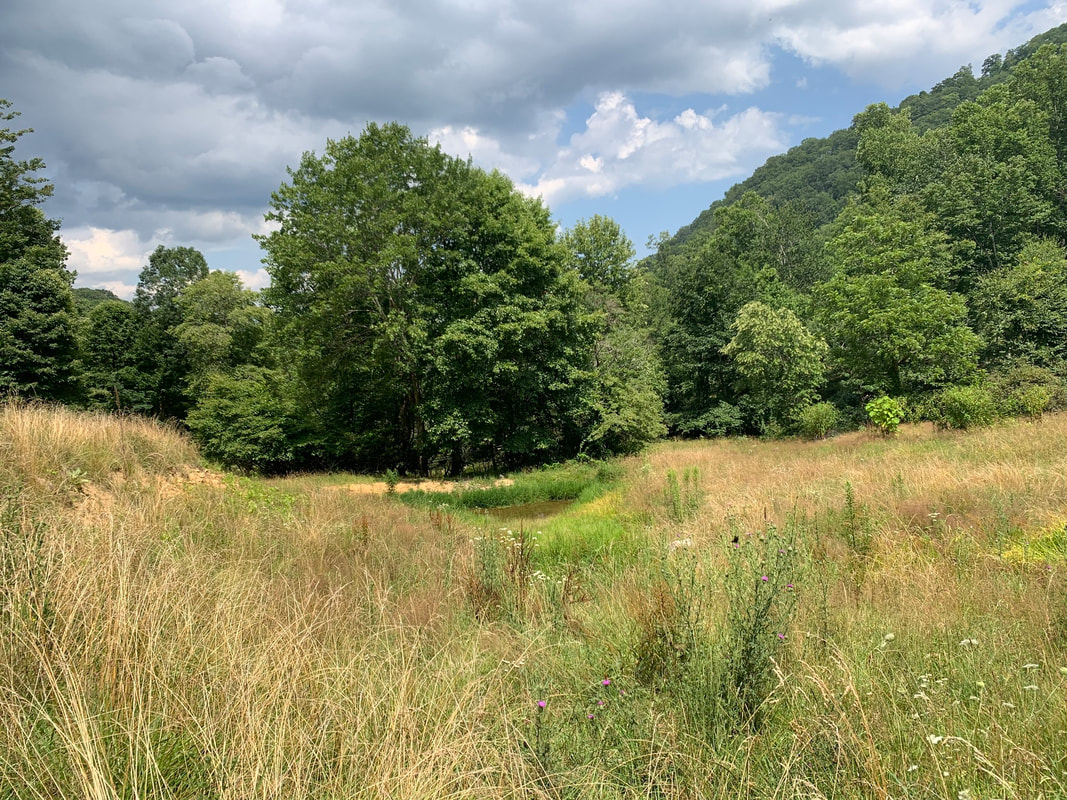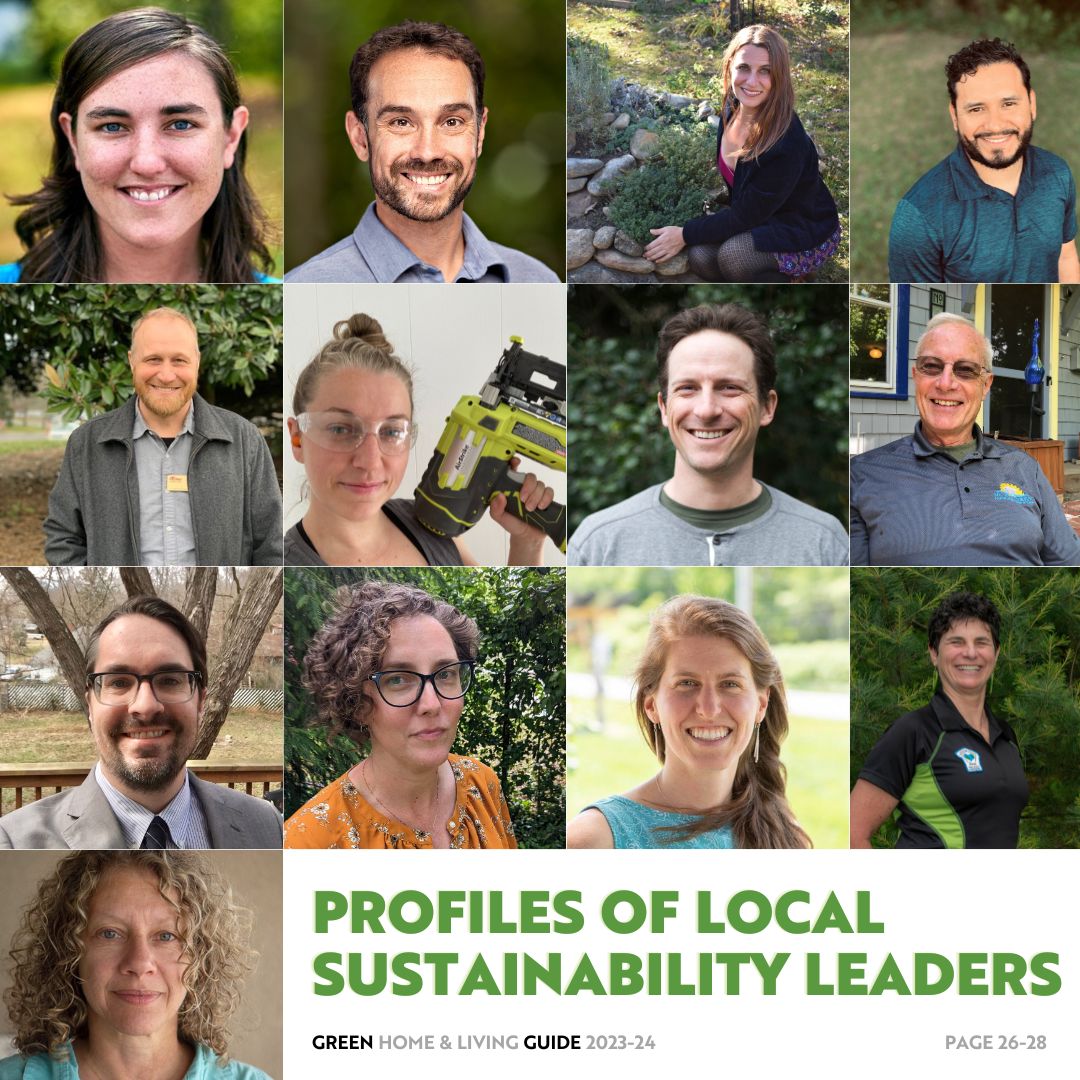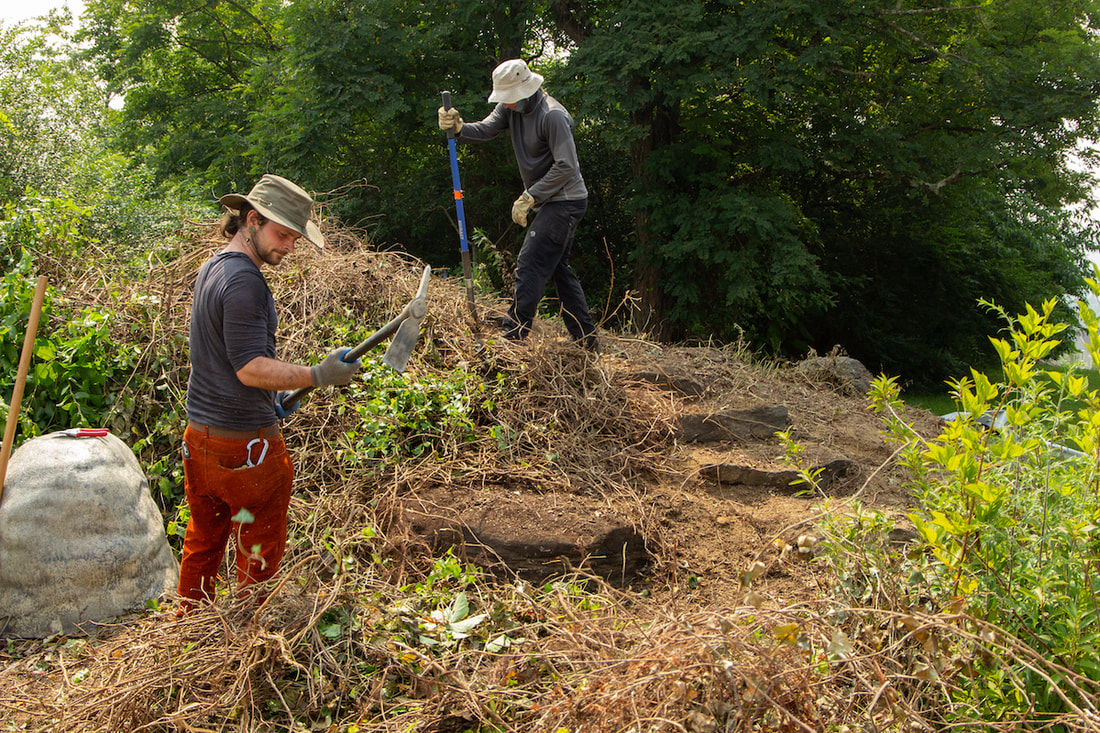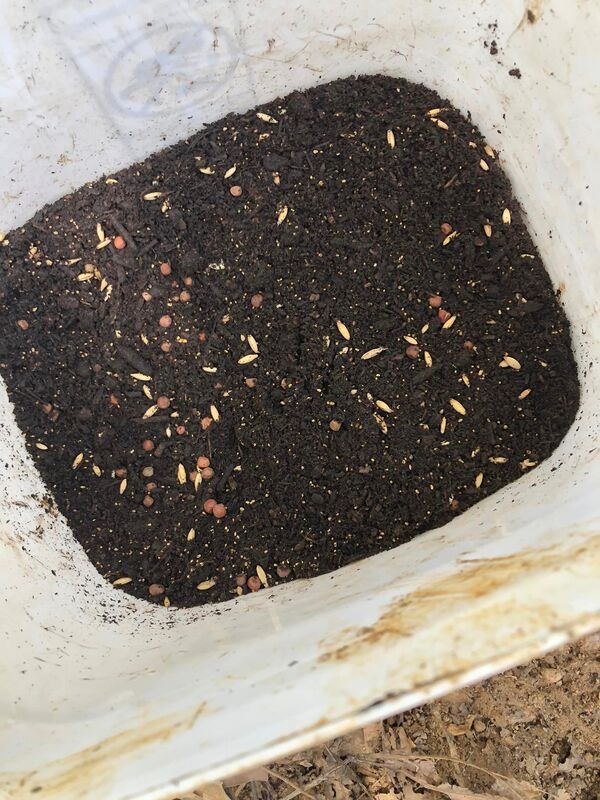|
In garden areas where it is sunny and hot, and we grow plants such as sedums or Mediterranean herbs like rosemary or lavender, we at Healing Roots Design like to use an ancient watering technology called Ollas, which are the terra-cotta vessels pictured above.
How do they work? We fill them with water and plant them in the soil, like any other plant. As water evaporates from the soil, it pulls the water from the terra-cotta out and into the soil, nourishing the plants. Pretty amazing! Ollas come in various sizes. Simply refill with water as needed. This is a passive watering system that allows people to go away for a week on vacation and still have their plants watered! A great addition to any garden on the sunny side. Curious about Ollas and how to work with the hot and dry areas of your garden? Reach out for a consultation!
0 Comments
Are you curious about what happens during a Healing Roots Design consultation?
Unlike a standard landscaping consultation that can be reductionist and create environmental problems after installation, Permaculture Designers stay open and curious about their surroundings to understand the physical history of land use, existing challenges and potential opportunities specific to the site, and the human personality, desires and health goals of the clients to design and achieve the best holistic outcomes for the land and the people who will be nourished by it. In our time together, we will discuss legal issues, common pain points, unsavory sight lines to biologically interrupt, whether existing pathways are adequate for the people and materials to move around the site, as well as how the land is shaped by the watershed and features both above and below the land. We will investigate patterns of sun, wind, pollution, and the current health of the soil. The conversation includes ecological tidbits that may revolutionize how you see your land and yourself as a steward, classic type 1 errors to avoid that cost significant expense during installation, suggestions on plants specific to soil, water, light conditions, and creating micro-climates to grow your favorite plants and fruit trees. We see your outer landscape benefiting and reflecting your inner landscape and have a desire to foster greater health and well-being for both your family and the planet. We will ask how you want to feel and recreate in your landscape, and tasks you like to do and don't want to do. We may also inquire how you are sleeping, what your health goals are this year, and what one change would make the largest difference with how you interact outside. In short, Healing Roots Design consultations are insightful, informative, ecologically and human-centered, and aspire to work with your goals, time frame, and budget to bring your land, garden, and health dreams to life! We care to meet you where you are, and create a sanctuary to mitigate anxiety, decrease stress, increase health and well-being and produce a flourishing harvest. If you want to set up a consultation with us, visit our booking page! Let's tune in about Sectors on the land. Permaculture designers use their keen observation and research skills to learn about visible and invisible factors that impact a landscape called Sectors. This includes positive (beneficial) and negative (disruptive) influences that impact a site, such as wind, fire, extreme temperatures (hot and cold), animal migration patterns, private and public interfacing zones, and pollution such as noise, light, cars, unwanted seed dispersal, etc.
When Healing Roots Design conducts a site visit, we bring these key patterns to light to our clients in order to reduce risk and plan accordingly. Why does this matter? Let's consider wind as an example. A soft warm wind is delightful under a hammock, drying clothes on a line, resting in the shade or having a picnic. Alternately, the winter winds may freeze tender perennials if planted in the path, while the summer winds may scorch and dehydrate and destroy garden crops. If you live in a fire-prone area, your risk for fire will likely come from this direction. As ecological designers, reading the land and utilizing the bird's eye view of the site, we may suggest windbreaks, shelter belts that disperse and filter the prevailing winds, alternate garden or activity locations, water catchment locations placed strategically, or develop and optimize micro-climates etc., to manage risk and meet mutually beneficial outcomes. Curious to bring out Healing Roots Design to discuss Sectors on your land? Check out our consultation options Healing Roots Design, LLC Founder and CEO Keri Evjy was named a Local Sustainability Leader by Green Built Alliance in late 2023, among 13 other stellar movers and shakers.
About Keri: Founder and CEO of Healing Roots Design, LLC and Regenerative Life Design, LLC as well as author of Regenerative Life Design Playbook, Keri Evjy has been an environmental educator and advocate for many years. Evjy says, “Humans are designers in action, capable of restoring our Earth and life connection as Stewards, achieving a more collaborative, integrated and interdependent life through the process. When we lean into Nature’s Intelligence in the design of our lives, our relationships, and our indoor and outdoor spaces, we witness ourselves as whole, intersectional and critical thinkers in service to resiliency in our world, and it ripples outward. As we tap into Nature and apply simple regenerative patterns to our lives and landscapes, we are meeting ourselves anew, and we can embrace ecological time of our lives, meeting small and large changes with acceptance, opportunity and humility.” Read the full Green Built Alliance article here Forest Ecology is a long, dynamic process. It takes a millenia of nutrient cycling and succession to grow the scaffolding for the diverse plant and animal species dependent on the bedrock material, elevation, soil and solar conditions. Forests provide innumerable and intangible ecological services: they build and cover soil, keep water hydrating and sustaining life, provide oxygen, host the bacteria and mycelia that decompose waste and are food for other species, and are home to the trees that are “standing lakes”, retaining moisture high in the watershed and preventing erosion. The temperate broadleaf forest biome is the building block for the fertile and flourishing Appalachian mountainside life that draws so many in their search for home. As development continues through the Appalachians, more marginal lands and steep slopes are being considered for human housing and settlement patterns. For those purchasing land, the time to begin their land stewardship and engage with ecologically literate professionals is at the beginning, before any development, excavation or build occurs, to best understand the ecological patterns impacting the land, site opportunities and limitations, and to protect the watershed and forest services. To learn more about topics related to stewardship for new land owners, check out our blogs on Covering Soil and Excavators. Healing Roots Design is here for you, along every step of your land journey! We often get called in for erosion mitigation for new builds where the land has been stripped, the house built, and clients are watching their topsoil run down the hill, causing gullies in the yard and neighbor frustration.
Our response, depending on the situation, is to: 1. Make and disseminate seed balls of fast growing cover crop 2. Lay down biodegradable erosion mat 3. Plug with native hardy perennials 4. Install shrubs 5. Install earthworks 6. Check dams and on-contour swales - to slow, infiltrate and re-direct the water Please do what is necessary to cover the soil as soon as possible, add vegetation, straw and address erosion at the source. Struggling? Reach out for a consultation with us! We are here for you, from the ground up, as you begin your land journey! While excavators can perform a variety of functions, they can do decades of damage in 1 hour. It is important to "be on the same page" with the operator and to be present with them.
One of our clients shared that they wished they had more empowering information before the operator came to "clean up", meaning remove everything growing, in a steep slope environment (not wise), and bury the native soil. A few tips: 1. Make a map of the wild plants that you want to keep and where it is ok to disturb the land, to share with the operator. 2. Do a land walk to go over the map with the operator in person. 3. For new builds, ask the operator to take an hour to scrape off the native topsoil and set it aside during construction to put back once complete, so that life and the embodied energy of soil making can be preserved. Are you working with raw land or a new build site? Consider a consultation with Healing Roots Design. We are here to support you in making decisions that best preserve the integrity of the land, at every stage of your land journey. Example of Work Where it Counts!
How to address water activity and erosion high up on a property? Rather than spending money addressing the spot in a water line where we most see the damage, a more effective and budget-honoring approach is to observe the water during a high rain event, chart where it's going and where it's not, and strategize an ecologically sensitive approach to collaborating with water. Start high in the landscape, create swales, check dams or re-direct the water to course via swales to more slowly infiltrate water through a slope. Over time we save money and preserve the integrity of the land down below, in addition to creating a spot mid-slope that will be passively irrigated via swales. Win-win. Boulders for micro-climates? Are you on a north facing slope and interested in growing marginally tropical plants? While Asheville and surrounds have experienced a shift in planting zones, boulders and thermal mass elements can help the warm loving plants to get more established, and give them protection and reflect heat even in the winter months. Think brick walls, accent boulders, ponds, slowing the air down around the area, to achieve the desired heat zone for your apricot, yaupon, pomegranate, or cantaloupes. Are you seeking solutions for your land questions? Contact Healing Roots Design for a consultation! Land requires love and tending. Love looks like maintenance, time for tending the relationship, resources and doing what's needed at the critical ecological time to leverage a shift. Prices in the construction world are 30% higher these days, resulting in less budget for holistic landscape design. At the helm of my small and mighty Healing Roots Design, I have seen some deeply damaged earth this year in new build situations cutting corners, and clients unable to put more than $5k together for $20+K jobs for "emergency services'', as I have come to call it, to stabilize and cover denuded slopes, reforest, add earthworks to mitigate flumes of water down scarred slopes, terrace, and hold back the mountain from generating a creek full of topsoil. Soil erosion, water channels through front yards, a shift of earth from one week to the next on fragile slopes, I deeply feel for the haggardness of the earth and the lack of components of stewardship from people who want my staff to be miracle workers on a shoestring curtailing all the damage in a season.
I note a staggering disconnect that people purchase $650K homes and think $5K for landscape. I wonder what contributes to this disconnect? Is it because humans consider the land as an afterthought? Is there an internalized discounting passed on to people who work with the land? Have we become so fixated on the built environment that the earth continues to live on scraps of care, love and attention? Has our transactional society and the last 2 year's surge of screen time further damaged the transformations that occur right outside our doors? I'd like to hear from lovers of the earth, as it's heavy on my mind, how to care for the earth and people, provide jobs with essential ecological and service function, and ensure critical restoration projects receive the love, budget, and attention visible to the untrained eye. The pictures above are from a job we cared for over a period of time, nudging succession, curbing water erosion and stopping the bleeding of materials leaving their site. The emergency trenches and swale systems we installed that keep back the erosion of yards of topsoil have held. I am beyond pleased with the 3 phases of seeding establishing themselves! Next up is installing trees and shrubs to fortify and stabilize the bank. Healing Roots is available for permaculture design, install and maintenance. Reach out for more information! |
AuthorKeri Evjy Archives
May 2024
Categories |
















 RSS Feed
RSS Feed